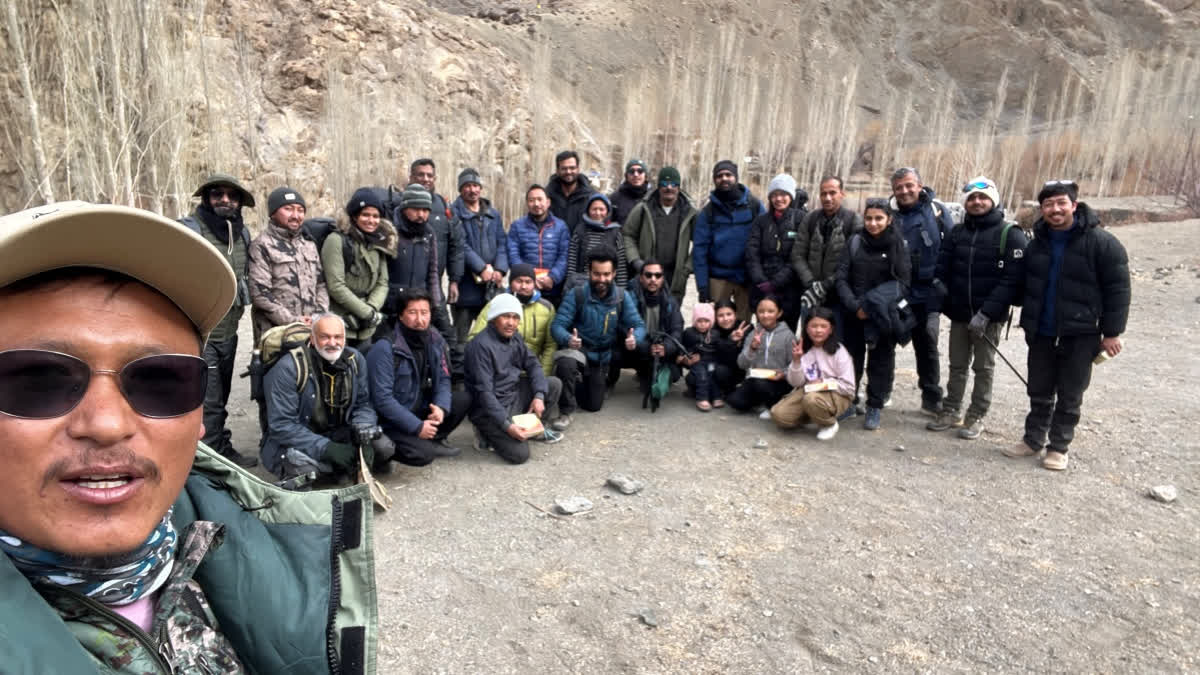Leh: Ladakh's natural beauty has made it a magnet for tourists, but beneath the surface lies a complex web of environmental, social, and economic challenges
Rigzen Mingyur from Rumtse village now a travel agency operator started working as a guide at the age of 16. He had witnessed tourism in Ladakh when only a few foreign tourists visited the place and preferred trekking all over Ladakh.
“Previously when foreign tourists used to visit Ladakh, the model was very sustainable. They preferred travelling all over Ladakh through trekking and this benefited the local villagers immensely, be it through homestays or by using horses and horsemen," he said.
"After the advent of domestic tourists, the economic distribution saw an imbalance," Rigzen said adding that domestic tourists prefer mostly a particular circuit like Leh, Pangong and Nubra which leads to benefitting a few".
He also echoed ecological concerns citing the saturation of tourism over a small area would lead to depletion and contamination of the underground water table.
On the way to the world-famous Pangong Lake from Leh, one would come across marmots, wild animals by nature who interact with humans. According to experts, the tourists feeding them have led to the marmots losing their ability to search for food and are even affecting their life span, and the marmots are now depending on the treats by the tourists.
Snow Leopard Conservancy India Trust, an NGO working for the conservation of highly endangered snow leopards started a project in 2003 where it utilised the setting up of homestays in villages to combat human-wildlife conflict. Dr Tsewang Namgail, Director, SLC-IT shared that the homestay project has truly benefited the local villagers and has solved the human-wildlife conflict in 15-20 years.
“Livelihood options previously were quite limited and villagers were suffering herd loss due to snow leopard. Engaging local communities in wildlife conservation was our main goal. The snow leopard was hunting their sheep and goats causing them financial strain. To mitigate this conflict and reduce it SLC first provided livestock dens to protect them," he said.
Dr Tsewang added that tourism was only picking up in those days in Ladakh and even though tourists went to remote villages the villagers were not benefitting from it. So, he said, the villagers suggested instead of tourists camping out they could stay in their homes and experience the local culture. SLC-IT has set up 200 homestays in Ladakh in over 40 villages.
Tashi Dorjay, owner of Sirupa Guest House in Hemis Shukpachan village said, “Having a guest house is a good source of income for me. I started in 1992 on a small scale and I have made it into a guest house. We serve the guests with produce from our farm and milk from our cows. This is a really great experience for them.”
“I think the shift needs to happen from urban tourism to rural tourism so that it is not just one sector benefiting from it. A major problem that this shift will solve is the rapid urban migration that is happening right now among the youth," Rigzen opined.
He added that if homestays get a good influx of tourists in the villages themselves then the youth will develop their homestays and in the process indulge in farming. According to him, homestay is a sustainable tourism model.
“There is also a change in the tourist’s mindset in recent days. Domestic tourists now are fed up with mainstream tourism and prefer quiet and peace. Some are also quite concerned and value Ladakh’s environment. For them, responsible tourism is a thing that they take very seriously. They do end up coming again and again,” added Rigzen.



